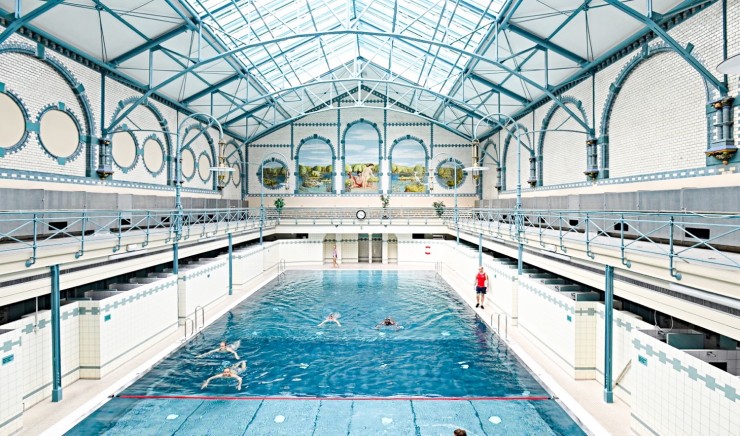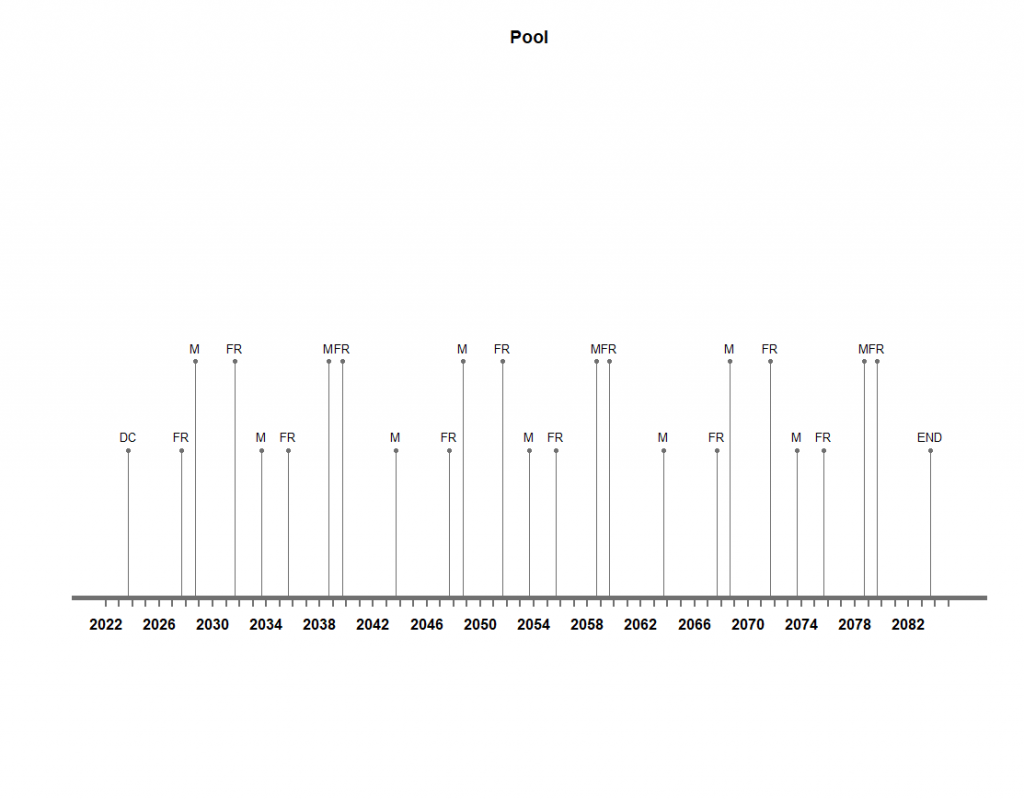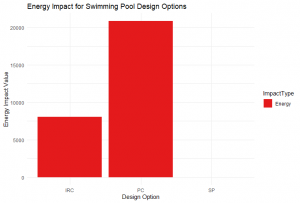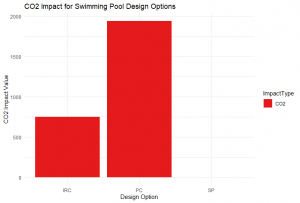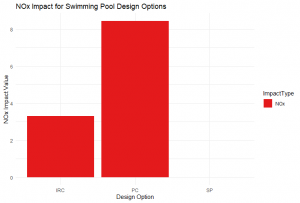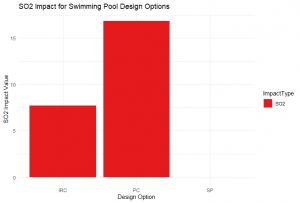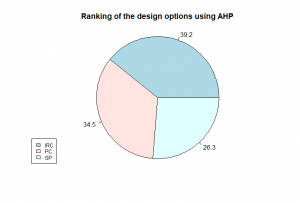In exploring the sustainable construction of swimming pools, I embarked on a comparative analysis through Life-Cycle Analysis (LCA) and Multi-Criteria Decision Making (MCDM). This investigation aims to assess the carbon footprint associated with three distinct swimming pool construction methods, focusing on the impact of material selection and construction practices on the environment.
Construction Methodologies
The study examines three design options, each utilizing different materials for the pool’s shell and finishing:
- Pools constructed with Precast Post-Tensioned Concrete, finished with ceramic mosaic tiles.
- Pools made from In Situ Reinforced Concrete, complemented by PVC finishing sheets.
- Steel Shell pools, coated with epoxy finishes.
Environmental Footprint: A Detailed Analysis
A thorough investigation into the materials reveals their cross-sectional areas and their environmental repercussions. This includes an analysis of energy consumption and emissions (CO2, NOx, and SO2) linked to each construction method, offering a comprehensive view of their sustainability.
Life Cycle Inventory: Insights into Sustainability
The life cycle inventory provides a deep dive into the performance and environmental indicators of the construction materials. This critical examination sheds light on the energy usage and gas emissions associated with each method, painting a clear picture of their environmental impacts.
Updated Timeline for Swimming Pool
Sustainable Construction: Making the Right Choice
The findings reveal a significant variation in the sustainability of each method. Notably, the steel shell option stands out for its minimal environmental impact, attributed to the reduced material requirements and, consequently, lower energy consumption and emissions.
Decision-Making Through Analytical Hierarchy
Employing the Analytic Hierarchy Process (AHP) within the MCDM framework allows for a nuanced ranking of each design option. This process evaluates them against critical sustainability criteria, including energy consumption of raw materials, emissions, and post-construction maintenance. The analysis concludes with the selection of in-situ reinforced concrete pools with ceramic mosaic tile finishing as the most environmentally friendly option.
Conclusion:
This research highlights the crucial role of material choice and construction techniques in the environmental sustainability of swimming pool construction. By advocating for the use of in-situ reinforced concrete and ceramic mosaic tile finishing, the study supports a shift towards more sustainable construction practices. The insights gained from this investigation, supported by life cycle inventories and expert advice from the PoolZone Company, aim to guide future sustainable construction endeavors, encouraging the adoption of green practices in the industry.
References
1.Life Cycle Inventories of Building Products
2.https://www.roechling.com/us/industrial/sports-leisure/swimming-pools
3.ASTM – American Society for Testing and Materials
4.Life Cycle Inventories of BuildingProducts (Data v2.0 (2007) Daniel Kellenberger, Hans-Jörg Althaus, Tina Künniger,Martin LehmannEMPA, DübendorfNiels JungbluthESU-services, UsterPhilipp ThalmannBau- und Umweltchemie, Zürich)
5.Expertise Engineers from PoolZone Company (info@poolzone.co)
